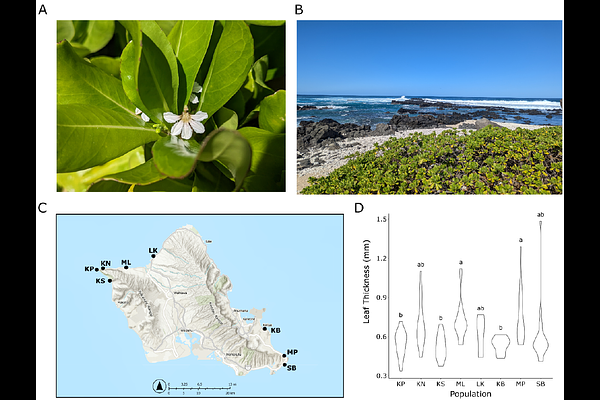Island-wide population genomic analysis of the coastal shrub, beach naupaka (Scaevola taccada L.), on Oahu

Island-wide population genomic analysis of the coastal shrub, beach naupaka (Scaevola taccada L.), on Oahu
McAssey, E. V.; Downs, C.; Heyduk, K.
AbstractPremise: Plant species face a myriad of challenges including climate change and habitat destruction. On Oahu in Hawaii, Scaevola taccada L., a coastal dune shrub, is highly impacted by human activities, but is also experiencing environmental threats like sea level rise. Despite its ubiquity across Pacific islands, the extent and distribution of genetic diversity in this species is unclear. Further, it is currently unclear how many times S. taccada arrived on Oahu. Methods: We surveyed population genomic diversity using ddRAD-seq in eight populations of S. taccada on Oahu. Using principal components and STRUCTURE analyses, we assessed whether genetic diversity was structured geographically across the island. Additionally, we generated whole genome sequences from five herbarium accessions and used a publicly available genome to construct a haplotype network to infer the number of times S. taccada arrived on Oahu. We analyzed climate data and leaf thickness measurements to understand how patterns of genetic diversity were correlated with environmental and trait variation. Results: Our analyses pointed to a trend in which two populations in protected areas were both genetically differentiated from, and harbored less genetic diversity than, human dominated areas. Further analysis of genetic structure via a PCA and pairwise FST indicated a secondary geographic pattern in our dataset by which western beach populations were differentiated from eastern beach populations. The chloroplast haplotype network suggested a single arrival on Oahu. Conclusions: Our results demonstrate that S. taccada populations in protected natural areas harbored unique genetic variation compared to human dominated beach parks, but that protected populations also had significantly reduced genetic variation compared to other populations.